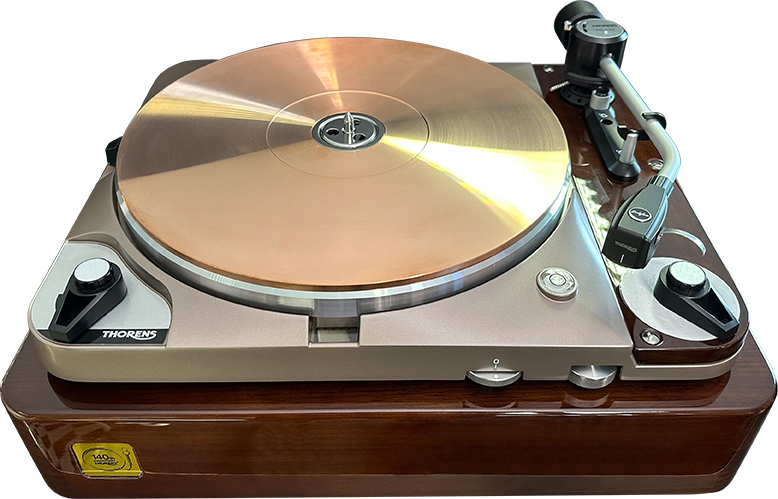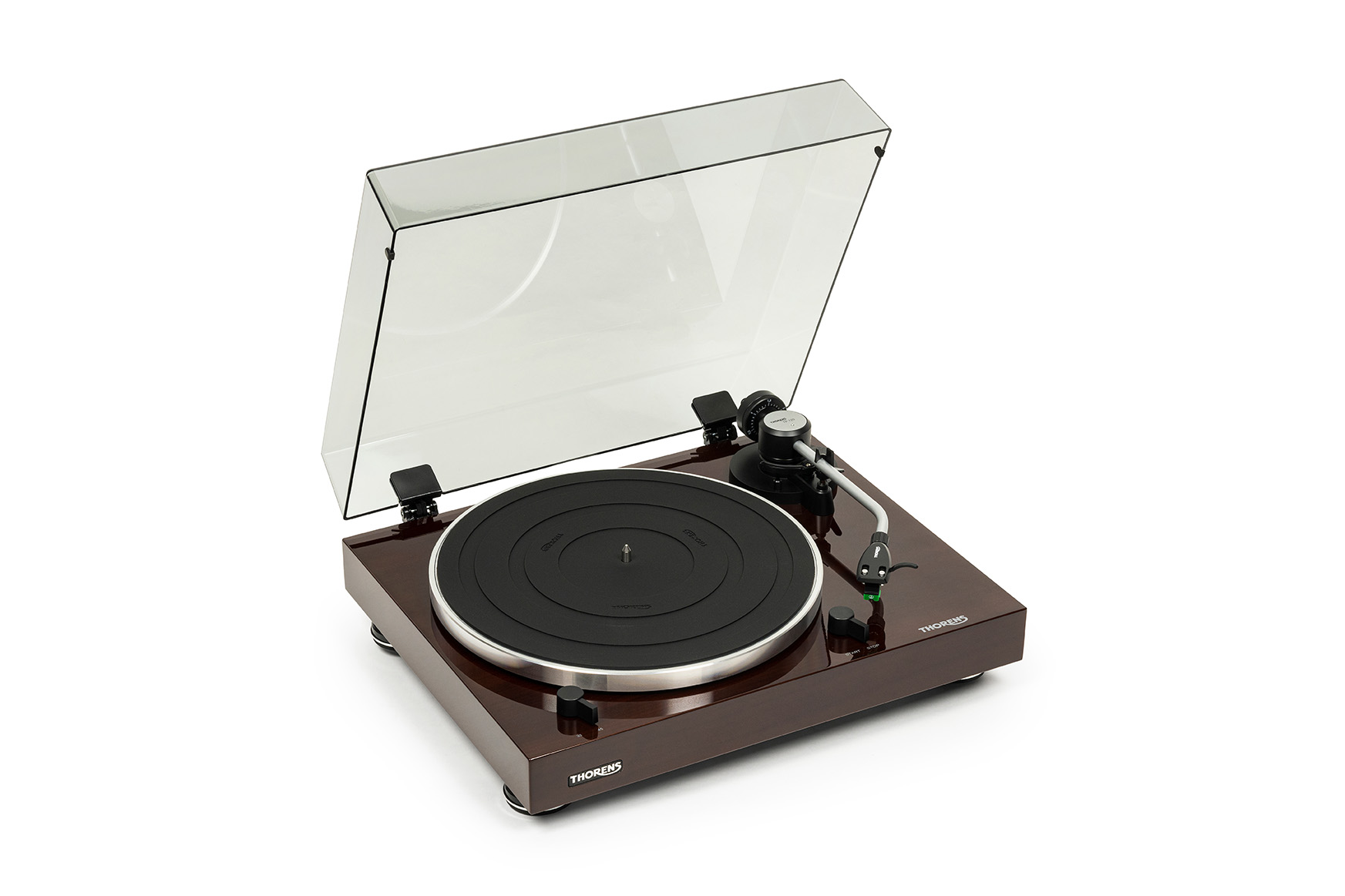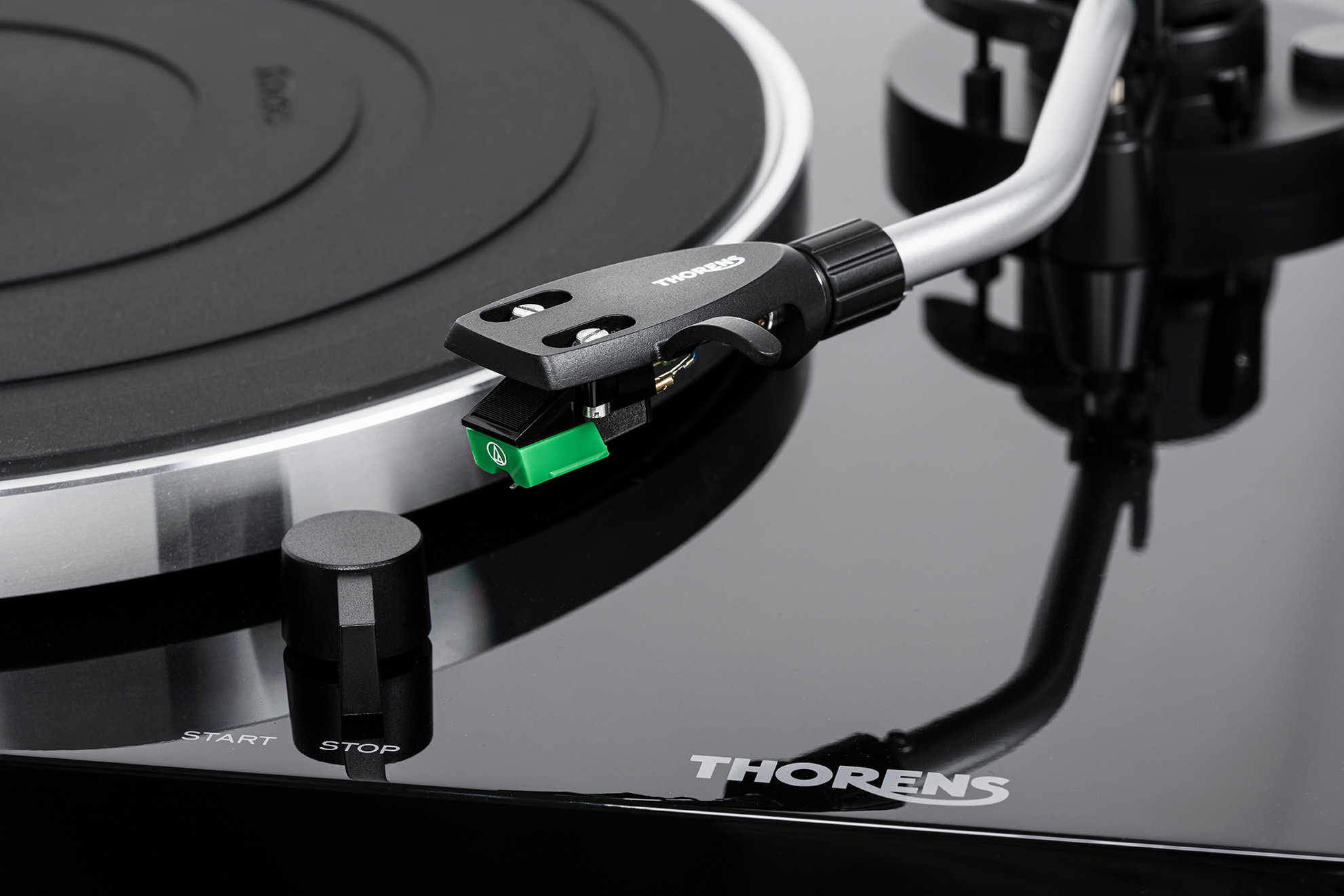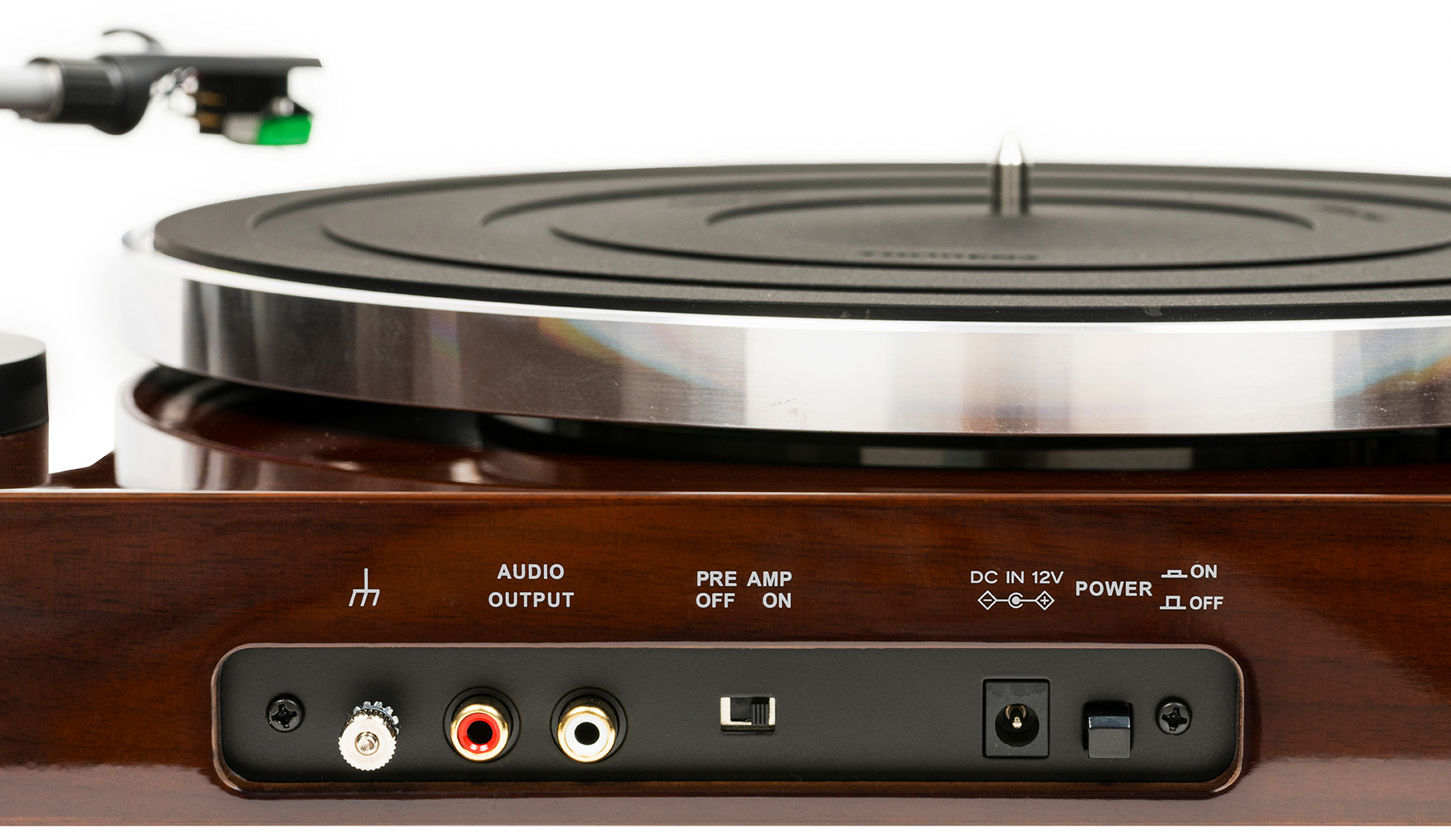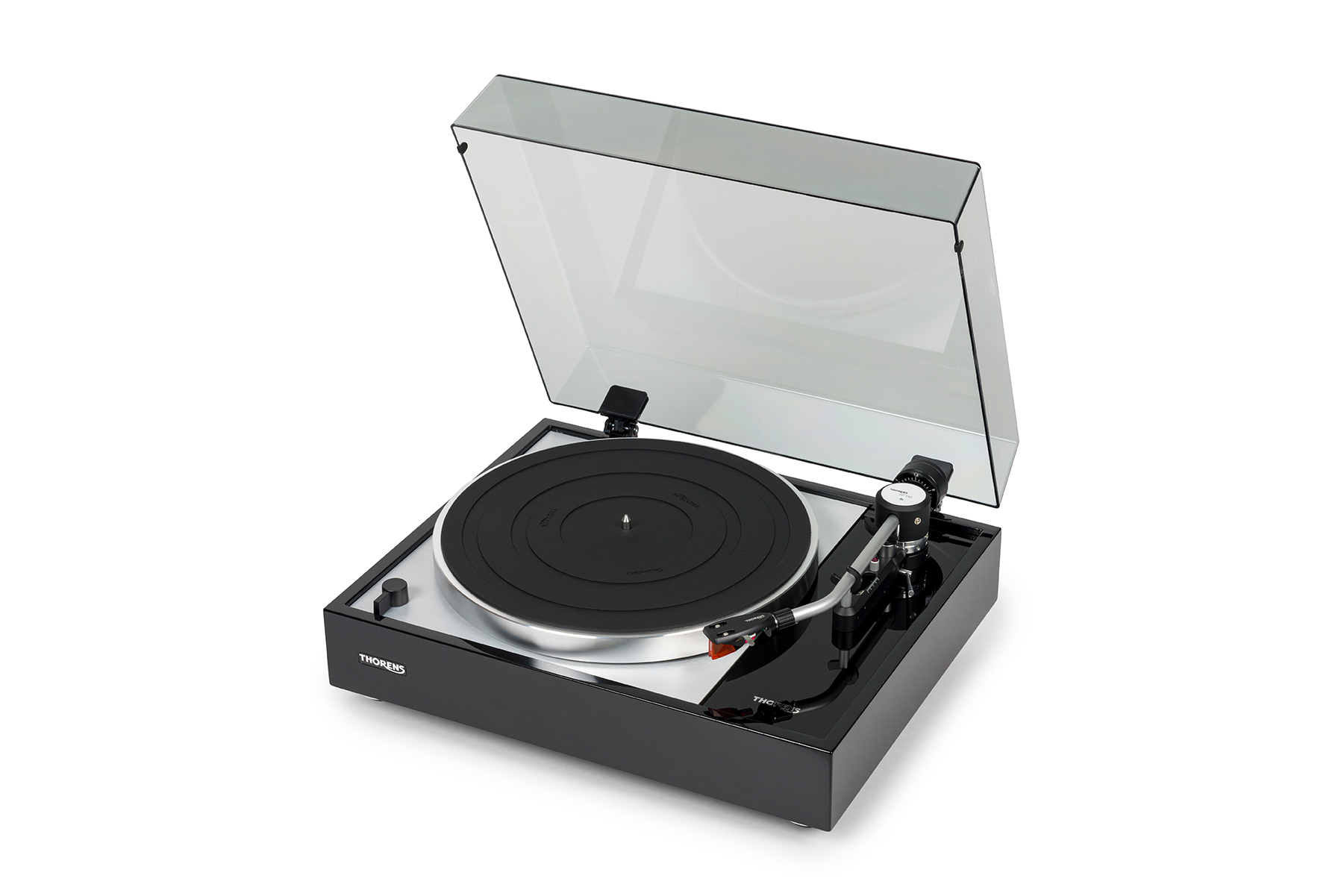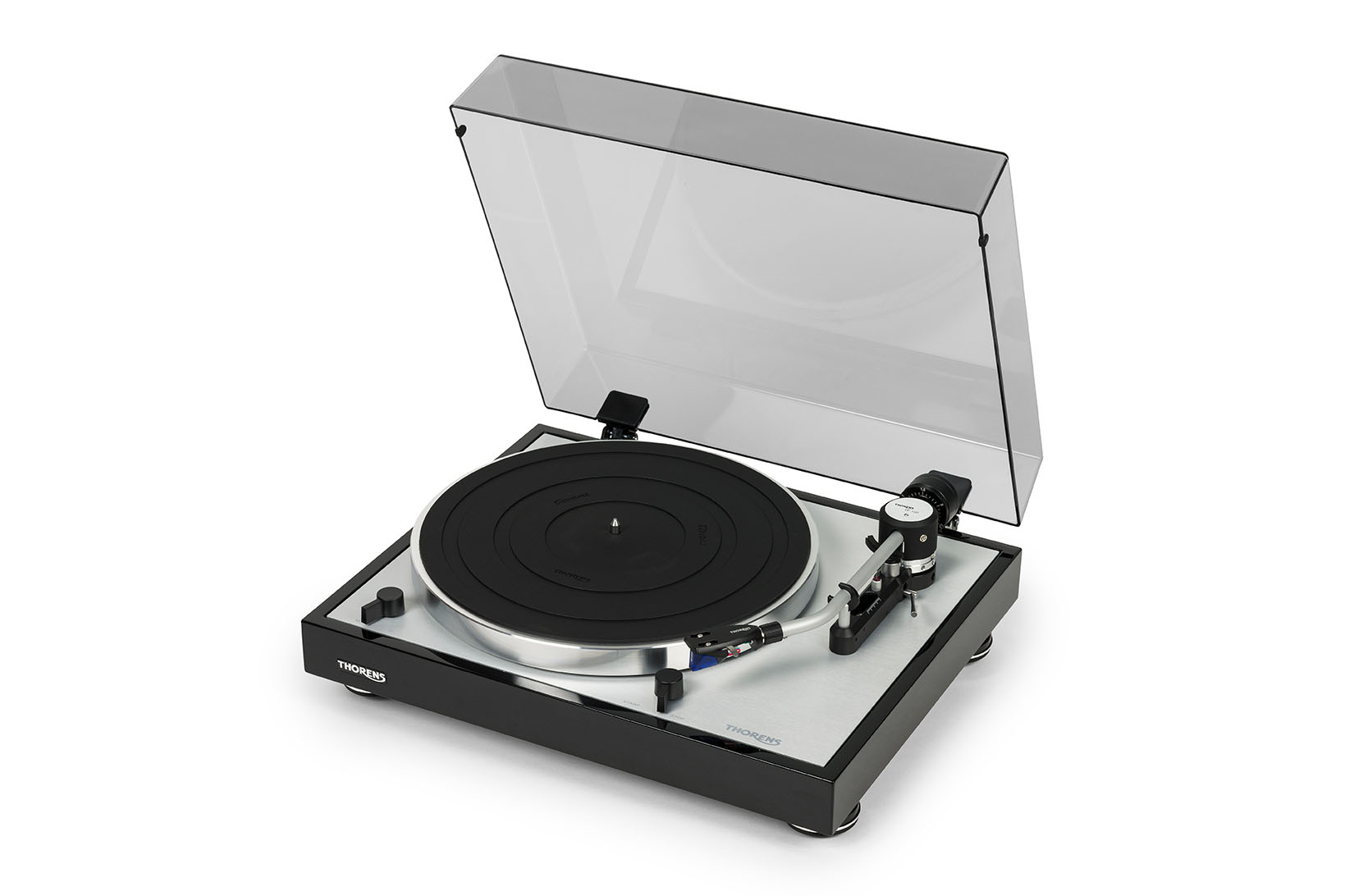Thorens New Reference

Fully integrated active vibration isolation by Seismion
The Thorens New Reference is the result of our strive for the perfect rendition of music recordings. The electrical signals in a turntable are created by mechanical vibrations of the stylus of the cartridge while it moves along the grooves of a vinyl record. These vibrations are converted into the sound.
In exactly the same way, all other mechanical vibrations of the turntable are processed and lead to distortion and other unwanted effects. The sources of these vibrations are for example building vibrations, people walking around, the sound waves of the music and self-generated vibrations from the turntable itself. Since it is not possible to distinguish between the actual music vibrations and parasitic disturbances, these must be avoided as much as possible.
The Thorens design team around Helmut Thiele, who is responsible for the construction and design of the new Reference, have taken on this challenge.
With the Thorens New References, for the first time ever a turntable is designed and optimized from scratch together with a fully active vibration isolation system. Thorens teamed up with the German company Seismion, which is internationally renowned for its class-leading active vibration isolators, to create a turntable, that is designed around the vibration isolation system as an integral part of the system. Seismion fully exploited its expertise in active isolation systems used for semiconductor industry, nanotechnology and scientific laboratories, to create a vibration isolation never seen and experienced in turntables before.
The active vibration isolation is based on piezoelectric acceleration sensors with an extremely high sensitivity, and an all-linear electronic control circuit to generate unrivalled low noise- and distortion-free control forces. This sophisticated mechatronic system is based on so called Sky-Hook-Damping and isolates disturbances already below 1 Hz and reduces them to less than 1% (-40 dB) at frequencies of 10 Hz and above. Such a performance is far superior to any other isolation (figure 1). This figure shows the comparison of the active isolation system - Sky-Hook-Damper - and a high-performance Air Spring. Especially at the critical frequencies around the resonance, the active isolation has a performance which is up to 100 times better. At 10 Hz it is still about 17 times stronger isolated than with an Air Spring. Other dampers like rubber mounts are on a much lower performance level and not shown in this comparison.

The overall system is designed in a way that the centre of gravity - COG - is close to the plane of isolation. In this way, the coupling of horizontal vibrations and tilting motions are greatly reduced (figure 2). Furthermore, the chassis itself is made non-resonant by its layered structure of highly damped materials.

The result of the vibration isolation is simply pure music like one has hardly experienced. The effect goes far beyond the simple elimination of foot-fall vibrations. In fact, even tiny vibrations in the range of nano meter down to pico meter are still efficiently isolated, due to the contact-less actuators. The system also follows music with high dynamics between quiet and loud sequences extremely quickly, since the active control forces stabilize the system and lead to an instantaneous settling time of the isolation system. An adaptive levelling system, which keeps the turntable precisely levelled within 20 micro meter completes the active isolation system.
Drive unit with innovative platter absolute-velocity-damping by Seismion
The other fundamental part of every turntable is the drive unit. The ultimate goal is to realize the perfect and constant rotation speed of the platter. This concerns both the absolute speed and modulations of the speed around the mean value also called wow and flutter.The Thorens New Reference features a high-quality German-made 3-phase synchronous motor, which is driven by three all linear power amplifiers with 120° shifted sine signals. The motor torque is transmitted to the platter by a belt (figure 3). The hydrodynamic bearing is optimized by use of lubrication theory equations. In this context the Sommerfeld-number is used, which describes the thickness of lubrication film and the diameter of the bearing. This number is named after german physicist Arnold Sommerfeld, who conducted several fundamental research in the field of hydrodynamics. A small Sommerfeld-number means the bearing is centered already at very low rotation speeds, which minimizes the wear and ensures minimum out of center errors like eccentricity and whirl. The hydrodynamic bearing is made and hand-finished in Germany.

Together with the innovative active damping technique, the belt-driven approach has several significant advantages:
- Unlike Direct Drive systems, the turntable platter is isolated from the drive motor because of the elastic belt. The high inertia of the platter is therefore efficiently utilized and helps to passively remain a constant velocity of the platter. Moreover, any fluctuations from the motor are strongly supressed by the platter/belt second order low-pass characteristics.
- A common disadvantage of belt-driven systems is the potential resonance of the platter, which is observed as wow and flutter. The rotational inertia of the platter forms together with the elasticity of the belt an oscillatory system. The resonance frequency is typically about 4 Hz, but depends on the actual parameter values of the system. The orange graph in figure 4 shows a peak around 4 Hz, where all disturbances are strongly amplified. This means that the rotation speed of the platter is no longer constant, but modulated with 4 Hz around the mean velocity. This effect is known as wow, and highly undesired, especially since the human ear is most sensitive to this frequency range. Figure 5 displays the weighting curve as described in DIN 45507 or IEC 386. The maximum of this weighing unfavorably coincides with the typical resonance of the platter / bearing system. Vibrations of the platter are excited mainly by the friction in the platter bearing, by a not perfectly circular platter, by irregularities of the belt and by slip between the belt and platter, which is necessary to transmit the torque from the motor. The orange graph sharply drops of for higher frequencies. This is the desired effect of the platter inertia.


The Thorens New Reference features an innovative and highly effective active damping system by Seismion. The deep knowledge and experience with sky-hook-damping systems featured in the active vibration isolator “Reactio” are used for the all new active damping approach of the platter.
The rotation speed calculation of the platter is based on two ultra-high-precision quartz-oscillators with a long-term stability of max. 3 ppm over 20 years, allowing for a safety cross check and reliable speed control over the life time of the New Reference. In fact, it means that the absolute speed remains within a range of 33.3332 to 33.3334 rotations per minute over 20 years.
The signal of the high-precision rotation encoder, which is mounted on the platter-shaft, is fed into the control electronics, which realize an absolute-velocity-damping of the platter. The effect might be compared to a highly viscous platter bearings, that are commonly used in belt-driven turntables. However, the active damping system designed for the Thorens New Reference has several advantages compared to passive damping techniques realized by viscous platter bearings:
- The active damping reduces the resonance amplification at 4 Hz, and keeps the sharp drop at higher frequencies, while a highly viscous platter bearing has a negative effect on higher frequencies, since the graph does not drop as sharply, and the inertia effect of the platter is not utilized in the best way
- The active damping effect can even be increased much further (lower blue line in figure 4) than by passive means, maximum passive viscous damping is shown as dashed orange line in figure 4
- The platter bearing can be designed to be as friction-free as possible, since the damping is generated actively. As a result this bearing only generates minimal constant braking moment, in contrast to a viscous damped bearing.
Due to the low braking moment the stresses on the motor and belt are significantly lower. Therefore all disturbances are minimized and also lifetime is enhanced. The active damping does not create any constant braking torque, but only dynamic moments to eliminate the modulation frequencies.
As a result, the absolute-velocity-damping system in the Thorens New Reference efficiently absorbs any frequency modulations at the highest level possible.
Lastly, also the active isolation system which is explained in the previous section also contributes to a better Wow and Flutter performance, since it stabilizes the whole sub-chassis on which the platter is placed.
The Thorens New Reference can be equipped with up to 3 tonearm bases and can accommodate tonearms of 9", 10", and 12" inches. In addition to the newly developed TP160 cutting bearing tonearm with a length of 12" inches and continuous silver cabling, the Thiele TA01 tonearm is also used.
The complex kinematics of the Thiele TA01 combines the precise and rigid guidance of a pivoted tonearm with the advantages of a tangential tonearm. This design guides the cartridge with a maximum tracking error angle of 0.036 degrees across the record. The tonearm tube is double-walled and filled with a 2-component gel for optimal damping. The result of this design is a unique spatial resolution, extreme detail, and perfect tonality.
We are very proud to present this worldwide innovation for the 140th anniversary of Thorens during the High-End Show in Munich, says Thorens Owner and Managing Director Gunter Kürten.
